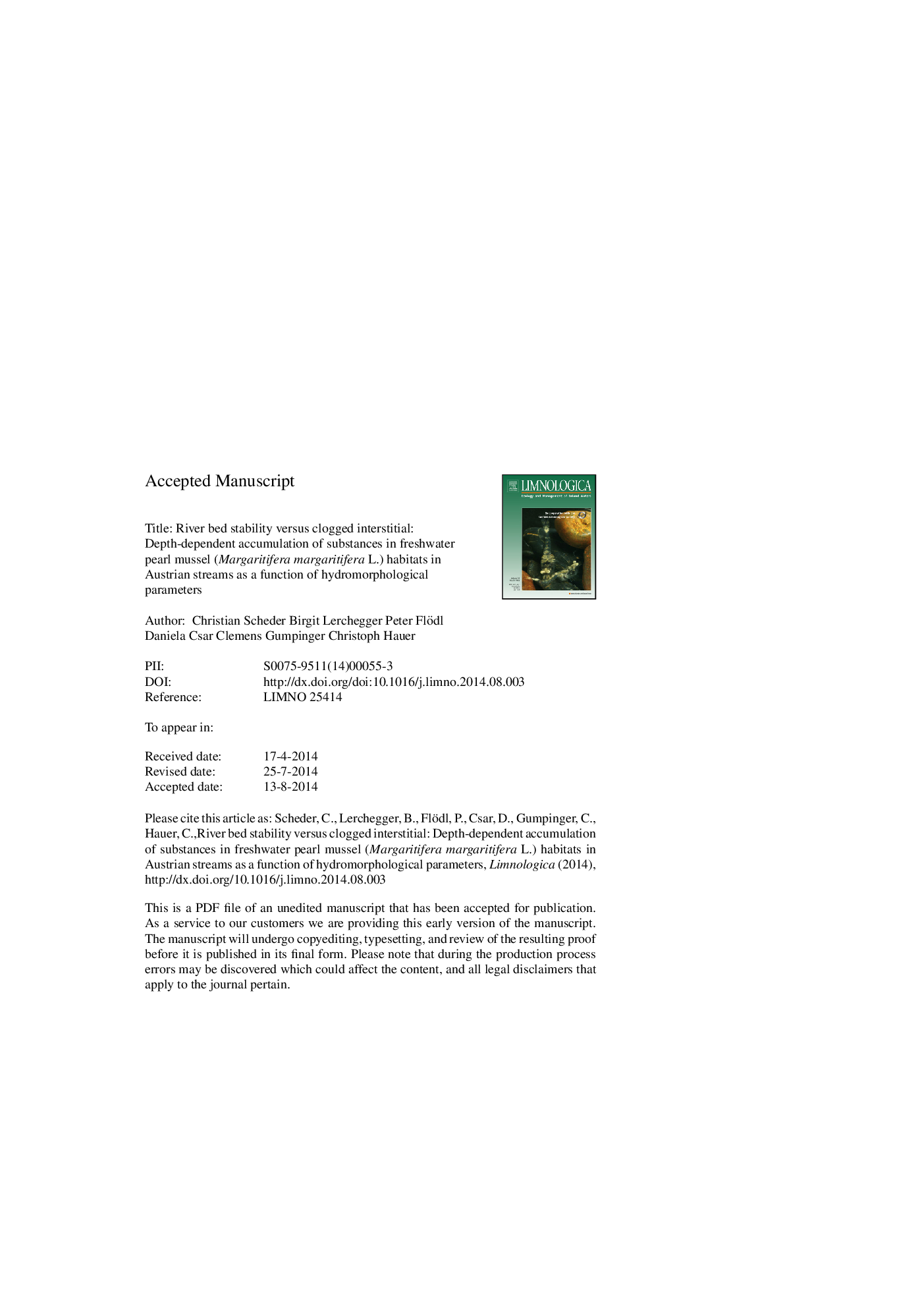| Article ID | Journal | Published Year | Pages | File Type |
|---|---|---|---|---|
| 6305570 | Limnologica - Ecology and Management of Inland Waters | 2015 | 46 Pages |
Abstract
Substrate conditions are considered crucial for the survival of juvenile freshwater pearl mussels (Margaritifera margaritifera L.) - and therefore for the recovery of overaged populations in danger of extinction - as fine sediments can clog the interstitial habitat and hamper water and oxygen circulation to the juveniles. Watercourses and their bed sediments must meet two seemingly diametrically opposite requirements in order to offer the freshwater pearl mussel appropriate habitats: stable substrates for all live stages and an unclogged interstitial for the juveniles. As only few scientific publications deal with subsurface conditions in pearl mussel brooks, the present preliminary study tries to contribute to this topic by compiling a variety of chemical and hydromorphological data from several Austrian watercourses with distinctly different characteristics. It was clearly shown that discharge patterns, hydraulic pressure, water depths and flow velocities affect both river bed stability and the perfusion of the hyporheic zone: In an artificial millrace with permanent low flow conditions and a permanently stable substrate a distinct barrier was detected within the first 5Â cm substrate depth that totally blocks the interchange between surface and interstitial water, resulting in an accumulation of substances of all kinds, among them potentially toxic substances. Such a barrier was also found to be building up in several natural watercourses, clearly indicating the danger of adverse land-use and of long-term low flow conditions in smaller brooks (given that the local decrease in precipitation, proven in long-term studies, proceeds). Significant differences in substrate concentrations in the interstitial water were detected between watercourses, whereas chemical conditions in the surface water exhibited no differences at all. An accompanying biomonitoring study showed high survival rates all over the study area, indicating the suitability of juvenile freshwater pearl mussels as bioindicators in terms of surface water, but not of interstitial water.
Related Topics
Life Sciences
Agricultural and Biological Sciences
Aquatic Science
Authors
Christian Scheder, Birgit Lerchegger, Peter Flödl, Daniela Csar, Clemens Gumpinger, Christoph Hauer,
